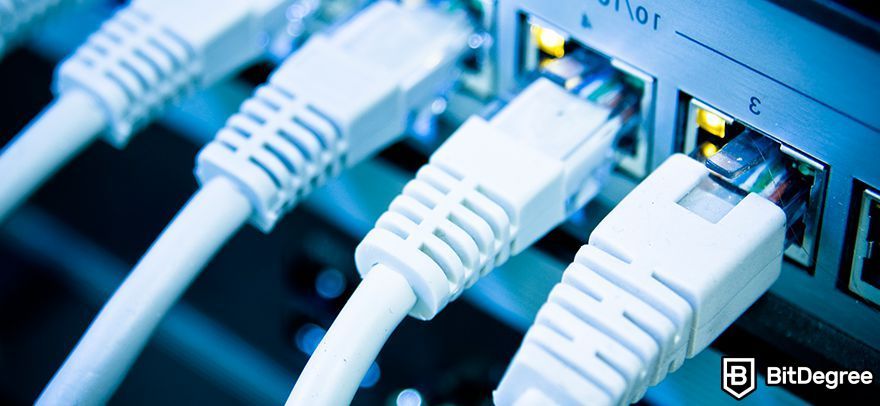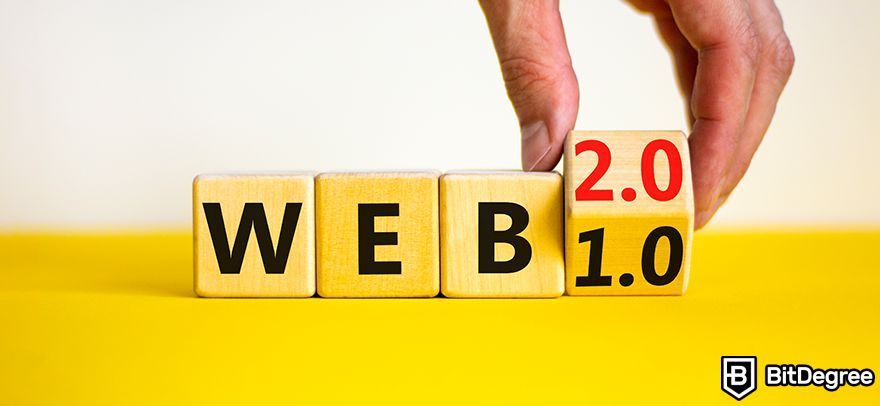There is a new Ethereum standard on the horizon, with some arguing that it has the potential to alter the makeup of the entire blockchain industry. This is known as ERC-4337, and it brings a change to the way that wallets can operate. But what exactly does it do, and does it truly have the chance of changing this industry?
What is ERC-4337?
ERC-4337 is a new Ethereum protocol that allows for a process called account abstraction (or “AA”). This is a term used to describe the process of allowing wallets to be controlled by more than just keys, but also via smart contracts. In this context, the term “abstraction” is used to mean that complexities are being hidden, producing a more streamlined and simplified experience.
And so, for an account abstracted wallet, this means that users can access and set up these wallets in a way that is much simpler than they currently are, having aspects like keys hidden or concealed. However, this does not mean these elements disappear, it just means they are less apparent.

Did you know?
Want to get smarter & wealthier with crypto?
Subscribe - We publish new crypto explainer videos every week!
How to Create an NFT: Easiest Way (Animated Explainer)


The idea of a smart contract controlling a wallet may be a little hard to get your head around. This would work by having a specialized smart contract that is set up to manage a range of features within a wallet that it is ascribed to. For instance, the smart contract could define how the wallet is accessed, how transactions are signed, and how gas (or transaction fees) are paid. Consider the smart contract as the main operator of the wallet, setting and enforcing rules.

Normally, a smart contract would be unable to do any of this, but since the implementation of ERC-4337, smart contracts have gotten smarter, and so they now have specialized features that can allow for this.
The most exciting example of this is how ERC-4337 allows for multiple different ways for wallets to be accessed. For instance, a smart contract can state that a user can provide their email and password to enter a wallet, rather than just using their cryptographic key. This could even be combined with other sign-in protocols such as two-factor authentication via one-time passwords. This brings wallets more in line with the rest of the internet, providing more standardization to the industry.
This means that wallets can be handled by an external party that provides an interface that is user-friendly, offering email and password logins, without the third party having any control of the wallet at all. You could argue that MetaMask and some other wallets already offer email and password logins without using account abstraction, but this is a half-truth. What these wallets do is they try to streamline the process of accessing and using your wallet by treating it like an online account, but essentially you still need your cryptographic keys to sign for all transactions and activity.
With account abstraction, you get the option to sign for activity in other ways that do not require keys. This includes using your email and password, using one-time passwords, or even using biometrics, as this is theoretically within the scope of these new account-abstracted wallets. Think of ERC-4337 as a way of introducing other signing methods and placing them at the same significance as keys.
This is a huge deal, as keys have been the most important element of owning a crypto wallet since the start of the industry. However, that might not be so important in the future, when other methods of providing signatures are given.
ERC-4337 also adds additional functionality for payment processing. It allows people to send ERC tokens to locations even if they do not have an Ethereum balance. For those who do not know, when you send ERC tokens, you must pay the gas fee in ETH. Before ERC-4337, there was no way of avoiding this, making for a highly cumbersome experience.
However, with ERC-4337, new members of the Ethereum community, known as paymasters, are introduced to the ecosystem who can collapse the problem. A paymaster is somebody who can pay for a user’s transaction on their behalf. By using a paymaster, somebody can avoid paying in ETH by giving the paymaster the transaction fee in the tokens they have in their wallet, with the paymaster balancing that out and giving the Ethereum network ETH for them. Or, if you find a generous paymaster, they can pay for the whole transaction without taking any money at all!
There are some other significant features coming with ERC-4337, but these are the main ones, and they will be the focus of our discussion.
A New, User-Friendly Future
ERC-4337 has been making a big splash in the Ethereum and blockchain community. Many people are hailing this as one of Ethereum’s most important updates when it comes to usability and overall adoption. The idea of accessing and using wallets with simple and straightforward means is huge, as it brings wallets in line with practically the rest of the internet. In turn, it creates a drop in the knowledge and mental capacity connected to using these blockchain and web3 technologies.

This is the central argument that people make when they frame ERC-4337 as an insight into the future of the industry. They present it as a vision of how the space could look in due time. Through this update, the Ethereum devs have potentially created a situation where people use cryptocurrency in a simple and effective way, therefore leading to more onboarding into the space as a whole.
If this protocol takes off and becomes the standard in the Ethereum space, this could have some pretty sizeable knock-on effects. Let’s take a look at one small one, and one possibly huge one. The small one is that it would create a new and lucrative avenue for making money, in the form of being a paymaster. Paymasters, as mentioned earlier, are people who handle transactions for ERC-4337 accounts.
One way being a paymaster can be lucrative is by allowing people to make transactions for their tokens without using ETH, by charging them a premium via the tokens they have. This might sound like it would not make much money, but for many newcomers, they will receive an ERC-20 token without having any ETH on them, which typically means they money stays firmly planted in their wallet. Considering how, on a good day, you only need $3-$7 worth of ETH to send a transacation, it oftentimes does not make sense to purchase ETH for the transaction as so little is needed.
Newcomers may simply choose to forget about their assets and abandon them. But via a paymaster, they would be able to move them, provided they have enough of the token to cover the costs. Paymasters can then charge a little higher for this privilege.
The next, much bigger, change that could be triggered is that account abstraction features may attract more newcomers to Ethereum via its proposed greater onboarding experience. Now, some blockchains already offer some of the functionality that ERC-4337 brings, but they do not carry the same socio-economic weight and name recognition that Ethereum carries, and so they have not been able to capitalize on it.
This increase in onboarding could even happen in a somewhat concealed way, or in a way that is not so obvious. Since ERC-4337 allows wallets to get managed like standard Web2 accounts, it allows for decentralized applications to get created which present themselves as simple Web2 tools. This means that some people may use them and sign up without knowing 100% that they are using blockchain technology.
This might sound a little underhanded, but realistically, a project does not need to specify that it is part of the Web3 space to be honest– they could simply state that they are using decentralized technologies and they would still be accurate and genuine.
Something similar happened with Reddit, where they started offering NFTs to their users, but they chose to call them collectible avatars. This marks a growing trend in the space where some projects are choosing to use blockchain and Web3 technologies, but abstaining from using the lingo and jargon commonly associated with them.
The idea is that many of these terms come with baggage from bad press or bad experiences, and so some companies have found greater success at making them adoptable by distancing themselves from the industry as a whole. This is a notable shift from another prevalent perspective in the community, where some projects actively choose to include blockchain and Web3 terminology to attract more Web3 enthusiasts.
But, returning to the main point, ERC-4337 could lead to greater changes to the blockchain industry by bringing more people to Ethereum. It might not convert people who already use blockchain tech, as they do not need simpler tools, but it might bring many newcomers. And some of these might come to Ethereum without even knowing, as account abstraction allows for a wallet to look barely any different from a PayPal account (for instance).
In turn, this increase in ETH users could trigger The Flippening– a hotly anticipated event where Ethereum’s market cap exceeds Bitcoin's and overtakes its position. This would be a historic event, as Bitcoin has never left the top spot. In the past, people used to have a lot of faith that this would occur. Although, nowadays, there is less expectation of it happening any time soon. But with account abstraction, perhaps it will.
A Dialectic Shift
If we take a look at the trends within the internet landscape, then ERC-4337 is just the next shift in the direction blockchain tech is taking. For the last few years, there has been a huge push to increase the onboarding of complete beginners, and so this has led user experience engineers to opt for the same design language as Web2 technologies.

For this reason, Web3 tools have been looking more and more like their Web2 counterparts, because if they use the same design language, then there is less for newcomers to learn. ERC-4337 is the next logical step, as it makes wallets look and feel identical to other accounts.
Funnily enough, there has been another major shift happening in Web2. Many traditional websites and projects are trying to align themselves more with Web3 projects. This sometimes happens by adopting either their technology, adopting their terminology, or trying to foster communities in the same way.
In other words, Web3 is moving towards Web2 in some ways, and Web2 is moving more toward Web3. This might seem a little shocking, as Web3 has always presented itself as the antidote to Web2 and traditional technologies. The logic behind this is obviously that they are simply trying to make themselves more presentable to newcomers, but this activity can also be understood under a different framework.
The historian and philosopher Georg Wilhelm Friedrich Hegel often framed experiences and patterns in human history under his notion of The Dialectic. He argued that many situations begin with a thesis, a main idea or concept that emerges. However, the flaws within this idea tend to creep up over time, leading people to present an antithesis– an idea that acts as a strong and opposing response to the thesis.
But over a long enough period of time, and after a lot of discourse and potential battling between the thesis and the antithesis, a new prospect emerges. He called this the synthesis. This is where an idea forms that merges the two previous ones.
We could currently be in the process of watching one of these syntheses forming with the internet. Perhaps, instead of Web3 overtaking Web2, the two mix together to create an online experience that borrows from both. Just as Web3 tries to align with Web2 functionality, Web2 starts to align with Web3 aesthetics and terminology. And the result is a combination of the two, where the lines between them are consistently blurry.
This might even be a glimpse into what a post-Web3 world would look like.
Conclusions
ERC-4337 is a sign of a changing landscape. Not only is it a mark of technological progress and maturity for the Ethereum network, but it is an indicator that the blockchain space is moving further towards the user experience elements of Web2. This is by no means a bad, or a good, thing. It is merely a tonal shift in the space.
While the blockchain sector has mostly worked hard to distinguish itself from traditional projects, this has proven hard to continually do whilst still trying to onboard newcomers. This is especially tough when newcomers have only ever known Web2, and so the best means of bringing them to that side is to copy their style.
In other words, this industry might have hit an impasse. It can either choose to stay fully unique and alienate the world. Or, it can borrow from its predecessors and show the world what it is capable of. If ERC-4337 takes off, then we will know what direction the industry has taken.
Web2 is facing a similar problem: stay the same and stagnate, or show the world they can innovate. However, they already made their choice by largely trying to borrow from Web3 and begin onboarding themselves. In other words, both the thesis (Web2) and the antithesis (Web3) are questioning how much they want to interact with their counterpart. And with the excitement that ERC-4337 has generated, it looks as though the blockchain space may move the needle a little towards Web2, triggering a synthesis of sorts, created as a collaborative effort from both sectors.






















